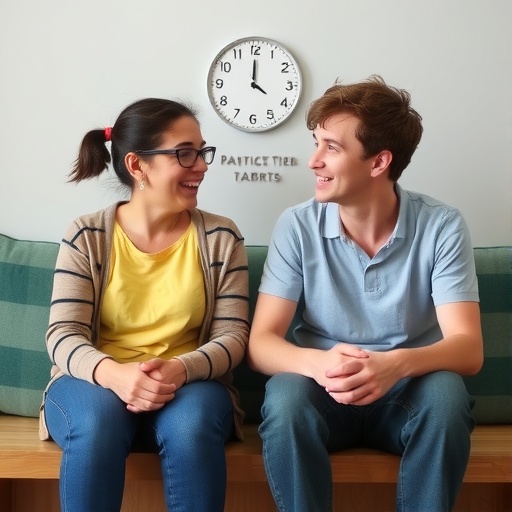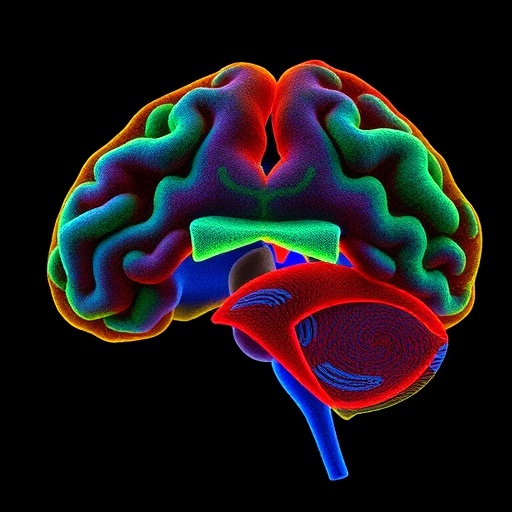
In a groundbreaking study poised to reshape our understanding of thymic biology and immune tolerance, researchers have uncovered how hyperactivity of the tumor suppressor protein p53 within medullary thymic epithelial cells (mTECs) imposes a remarkable influence on their differentiation potential. This investigation elucidates a finely tuned balance by which p53-mediated regulation of chromatin accessibility constrains the capacity of mTECs to adopt alternative, tissue-mimetic phenotypes—a phenomenon intricately tied to the induction of central immune tolerance.
At the heart of this research lies the enigmatic role of mTECs, specialized epithelial cells residing in the thymus that are pivotal for negative selection of autoreactive T cells. mTECs achieve this by promiscuously expressing a vast array of tissue-restricted antigens, a process fostered by epigenetic plasticity that enables the cells to transiently activate gene programs characteristic of diverse peripheral tissues. However, the mechanisms that both enable and restrain this plasticity have remained incompletely understood.
The current study harnessed a sophisticated single-cell multiomic platform merging chromatin accessibility and transcriptomic profiling, applied to genetically engineered mouse models harboring p53 hyperactivity selectively restricted to mTECs. Strikingly, when chromatin accessibility noise—reflecting stochastic fluctuations allowing gene regulatory innovations—was suppressed by p53 hyperactivation, these cells demonstrated a reduced propensity to venture into alternative “mimetic” states. These states include gene expression profiles akin to microfold, enterocyte, tuft, secretory, keratinocyte, ciliated, and myoid cell types, which mTECs typically emulate to present tissue-specific antigens.
.adsslot_dcHXwK3lFQ{width:728px !important;height:90px !important;}
@media(max-width:1199px){ .adsslot_dcHXwK3lFQ{width:468px !important;height:60px !important;}
}
@media(max-width:767px){ .adsslot_dcHXwK3lFQ{width:320px !important;height:50px !important;}
}
ADVERTISEMENT
Quantitatively, the biases against differentiation into microfold, enterocyte, tuft, and secretory mimetic phenotypes were profound, exhibiting 3.1-fold, 2.8-fold, 1.4-fold, and 1.3-fold reductions respectively compared to wild-type controls. Interestingly, keratinocyte and ciliated mimetic compartments maintained near-equivalent ratios, underscoring a selective influence of p53 activity on certain phenotypic trajectories.
To corroborate and extend these foundational observations, the team employed validated flow cytometric panels targeting mimetic mTEC subsets. These assays confirmed significant numerical declines in keratinocyte-like, ciliated, and myoid mimetic populations by approximately 28%, 44%, and 52%, respectively, in p53-hyperactive thymi. Additionally, tuft mimetic cells and the aggregate mimetic mTEC pool were reduced by about 29% and 30%. Such comprehensive analyses decisively implicate that p53 hyperactivity constrains the epigenetic landscape in ways that diminish mTEC plasticity and consequent peripheral tissue gene activation.
This suppression of chromatin accessibility noise orchestrated by p53 could be viewed as a molecular brake restraining the potential deviations from the canonical mTEC identity, thus preserving a defined epigenomic and transcriptomic state. Intriguingly, this challenges conventional paradigms that depict p53 predominantly as a guardian against genomic instability and tumorigenesis, revealing it also as a sculptor of immune self-tolerance landscapes.
From a mechanistic vantage, p53’s influence on chromatin accessibility likely involves complex interactions with histone modifiers and chromatin remodeling complexes, which collectively tune the stochastic epigenetic fluctuations—termed ‘epigenetic noise’—by which mTECs explore alternate gene expression programs. The coordinated suppression of this noise reduces promiscuous gene activation, arguably limiting the breadth of tissue antigens presented during thymocyte education.
This phenomenon gains particular significance in light of autoimmune pathogenesis. Adequate representation of peripheral tissue-restricted antigens by mTECs is essential for the deletion of self-reactive T cells or their conversion to regulatory phenotypes. By impeding differentiation into diverse mimetic subtypes, p53 hyperactivity may inadvertently curtail this antigenic repertoire, with potential ramifications for self-tolerance and autoimmunity susceptibility.
The findings unravel novel layers of epigenetic regulation embedded within thymic epithelial compartments and illuminate p53’s multifaceted role beyond canonical tumor suppression pathways. The study pioneers avenues for further investigation into how epigenetic noise modulation interfaces with immune tolerance, potentially inspiring innovative strategies to recalibrate autoimmunity or improve antigen-specific immunotherapies.
Technologically, the integration of single-cell multiomics permits the dissection of chromatin state and gene expression dynamics with unprecedented resolution, enabling the precise disambiguation of cell populations and their differentiation trajectories. The application of this approach in genetically modified models robustly demonstrates causality between p53 status and mTEC behavior, heralding a new era of immunoepigenetic research.
Moreover, the differential impact on specific mimetic compartments invites deeper inquiries into the lineage-specific chromatin architectures and the potential heterogeneity of p53-mediated control. Decoding these patterns could further clarify the hierarchy of epigenetic constraints governing central tolerance and reveal targets for therapeutic manipulation.
While the study centered on murine thymic architecture, its insights likely transcend species boundaries, bearing implications for human thymic biology and disorders characterized by immune dysregulation. As such, this research charts an inspiring course for translational applications aimed at modulating thymic function in autoimmunity, immunodeficiency, and perhaps even cancer immunosurveillance.
In summary, the research compellingly demonstrates how p53 hyperactivity acts as a gatekeeper restricting chromatin accessibility noise in thymic epithelial cells, thereby limiting their capacity to adopt diverse tissue-mimetic phenotypes critical for comprehensive self-antigen presentation. This refined control of epigenetic variability emerges as a fundamental mechanism promoting immune tolerance, highlighting the nuanced interplay between tumor suppressor pathways and immune system education.
The delicate balance orchestrated by p53 exemplifies the intricate molecular choreography underpinning immune homeostasis and underscores the transformative potential of integrating epigenomics with immunology. As this field expands, it promises to unravel yet more secrets of how our bodies distinguish self from non-self—a question at the very core of health and disease.
Subject of Research: The role of p53 hyperactivity in modulating chromatin accessibility and differentiation potential of medullary thymic epithelial cells (mTECs) to influence immune tolerance.
Article Title: Thymic epithelial cells amplify epigenetic noise to promote immune tolerance.
Article References:
Gamble, N., Caldwell, J.A., McKeever, J. et al. Thymic epithelial cells amplify epigenetic noise to promote immune tolerance.
Nature (2025). https://doi.org/10.1038/s41586-025-09424-x
Image Credits: AI Generated
Tags: autoreactive T cell negative selectionchromatin accessibility regulationepigenetic plasticity in immune cellsgene regulatory innovations in mTECshypomethylation and immune responseimmune tolerance mechanismsmedullary thymic epithelial cellssingle-cell multiomic analysisthymic epithelial cellsthymus biology researchtissue-mimetic phenotype inductiontumor suppressor protein p53





